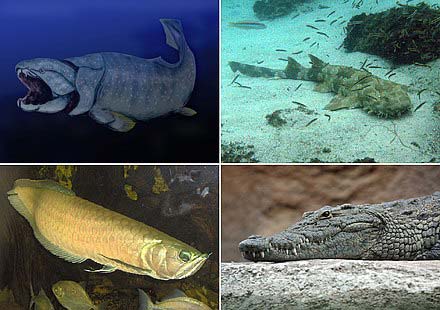Gnathostomata

Example of Gnathostomata: Dunkleosteus (Placodermi), spotted wobbegong (Chondrichthyes), silver arowana (Osteichthyes), and a Nile crocodile (Tetrapoda).
The Gnathostomata is the group of vertebrates that possess jaws and is thus distinct from the jawless fish, Agnatha. Jaws evolved from the gill arches of ancestral jawless fish, and their development was a major event in the evolution of vertebrates.
Gnathostomes also have a number of other features that distinguish them from their jawless relatives. These include paired fins, a notochord that is replaced by a vertebral column, and a more complex nervous system. The development of these features allowed gnathostomes to diversify and exploit a wider range of habitats and food sources.
The Gnathostomata includes the Chondrichthyes, Osteichthyes, amphibians, reptiles, birds, and mammals.


